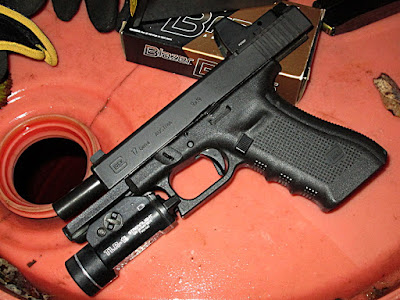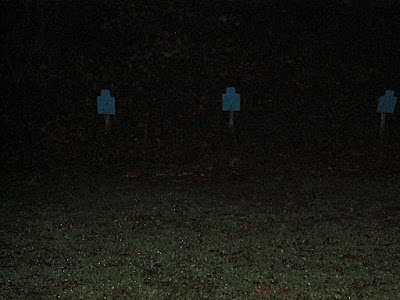More and more pistol users are
transitioning to reflex sights. They
aren’t new by any means. Invented in
1900, reflector sights were used on (in a limited way) World War I fighter
bi-wing aircraft. World War II saw more
extensive use of reflex sights in crew operated weapons and in fighter
planes. These units were not small and
it isn’t until recently diodes and manufacturing technology have made reflex
sights small and rugged enough for use on personal armament.
With the ability to focus on the red
dot superimposed on the target, target scores have improved. Finding the dot during the draw stroke is a
steep learning curve, but not any worse than learning to align the front and
rear sight and center them on the target.
Critics express concern about
battery life, mechanical damage and reliability. Many of the systems sip electricity so
lightly a coin battery can last for over a year, and other systems have
circuitry that require motion to remain activated still further extending
battery life. The overall performance
seems to be getting a thumbs up from the shooting and self-defense
community. A recent news report showed
US Marshals on the training range and everyone was shooting a reflex sight. I suspect they are here to stay.
 |
| The basic night gun, Glock 17, Trijicon Dot, Streamlight gun light |
This is not to say there are not
issues. But there are issues with fixed
sights as well. I recently took my Trijicon
reflex sight out on a rainy evening to practice only to have the rain
stop. It still continued to get dark and
I quickly discovered that even with enough ambient light to see the target, the
reflex sight was useless.
The red dot
blinded me with intensity and glare and the reflective dichroic glass became
opaque.
 |
| I could see the steel targets at 10-12 yards, but not through my reflex sight. |
The reflective dichroic surface in
the red dot or reflex sight also absorbs some of the light from the
target. At some ambient illumination
level, insufficient light will be transmitted to your eye. This same eye is also contracted by the diode. It shouldn’t be a surprise you can’t see
anything.
I checked my Truglow Tru-Tec 20mm
red dot and found the same thing.
But there is a simple solution: the
gun or tactical light. Add some light to
the situation and the illumination comes up enough where the dot functions as
it should. I use a Streamlight TLR 1 gun
light and that functioned fine. So does
my little Nextorch K3T penlight.
I found when it becomes too dark
to read a paperback book, it’s too dark to use only the dot. This illumination level worked for me. If I could read, I could see the dot on my
target. If I couldn’t read, I need some
amount of extra illumination. Your mileage
may vary.
Comments
Post a Comment